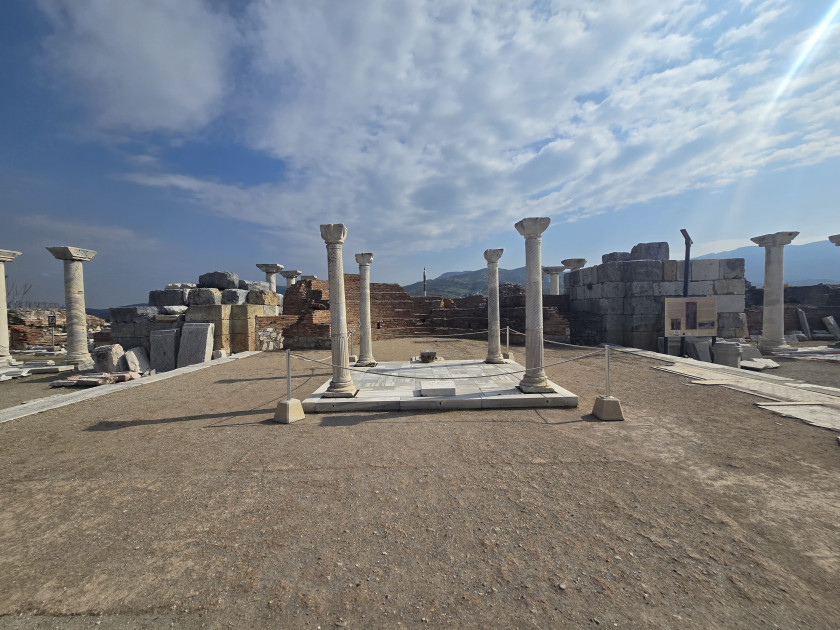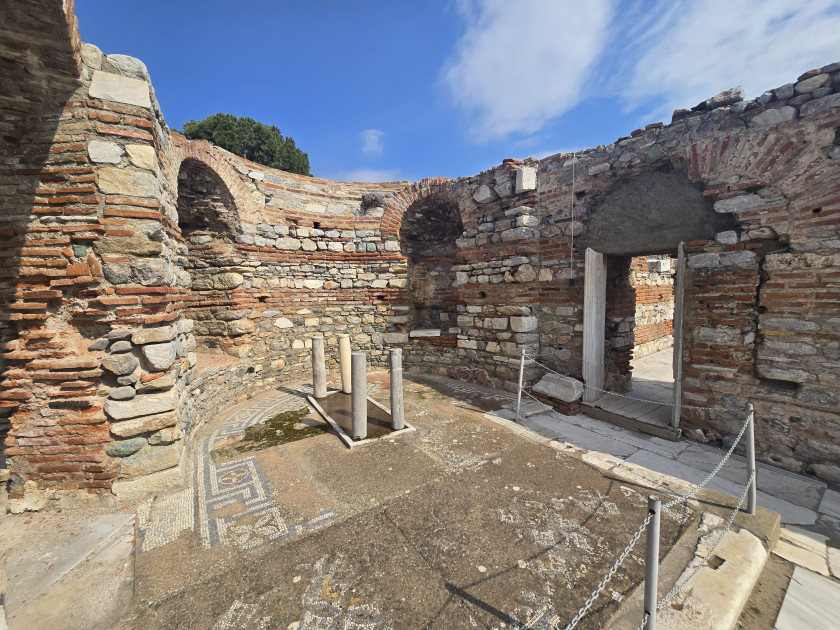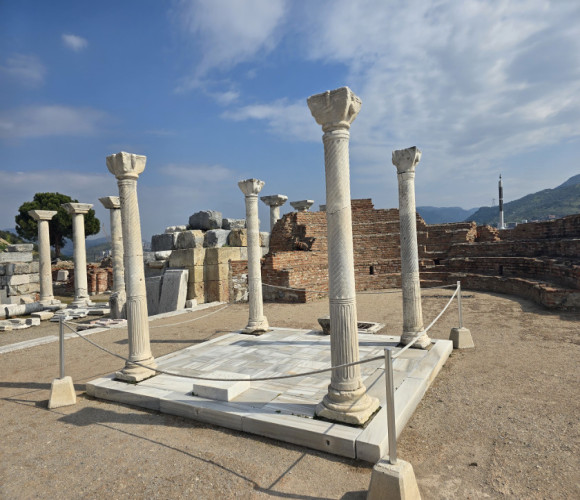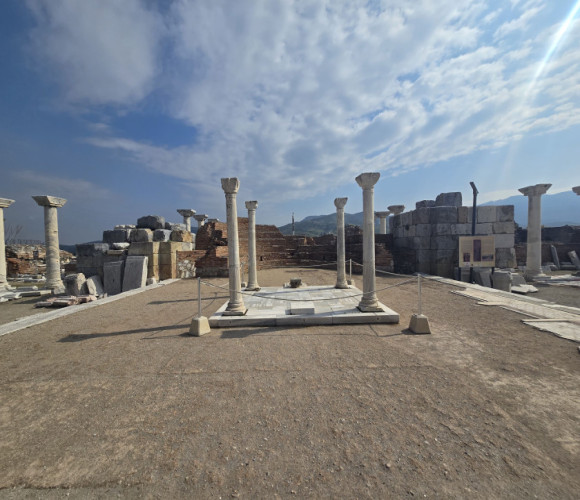- Binbirdirek Mah. Klod Farer Cad. Güven Apartmanı No:2/302 Fatih/İstanbul, Turkey
- Open 08:00-22:00: Monday - Sunday
- drop us an email info@istanbulguideservices.com
- 24/7 service +90 555 6022454
tags:






Traces of Christianity in Ephesus
St. John the Apostle, one of the most mysterious and influential figures in early Christian history, is known as Jesus's most beloved disciple, and his presence in Ephesus represents one of the most important testimonies to Christianity's roots in Anatolia. John's identity, works, and legacy have profoundly influenced the development of Christianity throughout the centuries. This article examines the life of St. John, his activities in Ephesus, and his position in Christian history based on historical sources.
John's Identity and Relationship with Jesus
St. John, known as the author of the Gospel of John, was one of Jesus's twelve apostles. In the Gospel texts, he does not introduce himself directly by name but refers to himself as "the disciple whom Jesus loved." The son of the fisherman Zebedee, John was in Jesus's inner circle and was notably the only male apostle present during Jesus's crucifixion.
According to the Gospel, as Jesus was dying on the cross, he entrusted his mother to John, saying, "Behold your mother," thus establishing a spiritual mother-son relationship between Mary and John. This event is considered not just a personal testament but also an important symbol in the formation of the early Christian community.
Mary and John's Arrival in Ephesus
Records based on documents from the Council of Ephesus in 431 CE confirm that St. John came to Ephesus with Mary between 37-48 CE. After Jesus's crucifixion, increasing pressure on Christians in Jerusalem caused them to disperse to different regions. It is accepted that during this period, John and Mary came to Ephesus and began living there.
Archaeological findings and historical records show that John actively preached in Ephesus and formed the first Christian communities. It is also known that between 55-58 CE, St. Paul came to Ephesus and added new communities to those established by John. This situation demonstrates how central Ephesus was for early Christianity.
Persecution by the Roman Empire and Exile to Patmos
It is definitively known that John was actively preaching in Asia Minor (modern Western Anatolia) from 67 CE onwards. Working alongside St. Peter during this period, John was subjected to increasing pressure from the Roman Empire.
During Emperor Domitian's reign (81-96 CE), severe persecution of Christians began. According to historical records, John was twice nearly executed in Ephesus during this period but miraculously survived each time. Legend has it that he was once thrown into a cauldron of boiling oil but emerged unharmed. Following these events, the Emperor exiled him to the island of Patmos in the Aegean Sea.
During his exile on Patmos, John is thought to have written the Book of Revelation (Apocalypse). This book describes the end of the world and the coming of God's kingdom in symbolic language. After Emperor Domitian's death, when Nerva (96-98 CE) ascended to the throne, John's exile was lifted, and he returned to Ephesus around 95 CE.
John's Final Years and Legacy in Ephesus
After returning to Ephesus, John lived in the region known as Ayasuluk Hill. Historical records indicate that he wrote his Gospel and three epistles here. The Gospel of John, unlike the other three Gospels (Matthew, Mark, Luke), has a more theological content and emphasizes Jesus's divine nature.
John died in Ephesus at approximately 100 years of age and was buried there according to his wishes. A Martyrion (memorial tomb) was later built over his grave during the period when Christianity was spreading. During the reign of Roman Emperor Justinian I (527-565 CE), a magnificent basilica was constructed over this memorial tomb. Today, the ruins of this basilica can be seen on Ayasuluk Hill within the boundaries of the Selçuk district.
The Theological Legacy of St. John
St. John's greatest legacy is undoubtedly his written works. The Gospel of John is one of the fundamental texts of Christian theology and contains deep theological ideas on subjects such as the incarnation of the "Word" (Logos) and Jesus's divine nature. John's three epistles are practical theological guides written against problems and heretical teachings that emerged in early Christian communities.
The Book of Revelation is one of the most important examples of apocalyptic literature and has played a major role in shaping Christianity's eschatological (end times) doctrine. This work has inspired countless artworks, literary texts, and theological discussions throughout the centuries.
St. John's Basilica in Ephesus and Pilgrimage Center
The basilica built over St. John's tomb became an important pilgrimage center during the Middle Ages. Having strategic importance during the Crusades, this structure was repaired and expanded at various times. The church, which continued to exist during the Seljuk and Ottoman periods, eventually fell into disrepair, but its ruins have survived to the present day.
Archaeological excavations have revealed a crypt beneath the basilica thought to be St. John's tomb. Additionally, a baptismal font, priests' chambers, and large areas where ceremonies were held have been identified in the church complex. These findings demonstrate how important a center Ephesus was during the early Christian period.
St. John is a figure of great importance not only for Christianity but also for world cultural heritage. His presence in Ephesus demonstrates that Anatolian lands were an intersection point for different beliefs. During John's lifetime, Ephesus was both an important city of the Roman Empire and a center of pagan belief with the Temple of Artemis.
The establishment and spread of Christianity in this cosmopolitan environment was largely realized through the efforts of figures like St. John. Today, the ancient city of Ephesus and the ruins of St. John's Basilica in the Selçuk district are tangible witnesses to this rich cultural heritage.
In conclusion, St. John's identity and legacy are not only of religious importance but also a historical example of dialogue between cultures and beliefs. His teachings and works continue to influence millions of people throughout the centuries and form an important part of Anatolia's rich cultural mosaic
Fri, Mar 7, 2025 11:49 AM
Comments (Total 0)